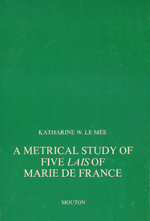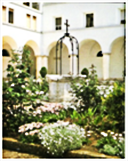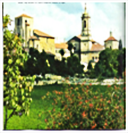Katharine Le Mée - Other Writings
A Millennium of Music: The Benedictine Tradition

This collection of three compact discs, commissioned by the
International Order of Benedictines to mark the beginning of
the new millennium, is specifically designed to illustrate
the development of Western music from its early roots in
Gregorian chant to its polyphonic elaboration at the end of
the twentieth century.
On CD#1, Adoration:
Music of Worship, monks and nuns
from eleven different Benedictine monasteries and convents
chant selections from the Mass and the monastic hours,
following the pattern of the liturgical year. Although all
examples are inspired by the work of the Abbey of St. Pierre
de Solesmes in France, each illustrates regional nuances of
the Latin chant.
View
content and liner notes, [PDF]
CD#2, Celebration: Music
of Devotion, includes vocal and
instrumental selections from the Baroque and Classical
periods by Palestrina, Aichinger, J.S. Bach, D. Scarlatti,
and W.A. Mozart, all originally rooted in the chant liturgy.
The commissioned Te Deum, composed by Johannes Somary,
combines the traditional Latin text with quotes in French,
German, English, and Italian taken from the Prologue of the
Rule of St. Benedict. Inviting both celebration and serious
reflection, this cantata illustrates a rich variety of
musical styles, traditional and contemporary.
View
content and liner notes, [PDF]
On CD#3, Exaltation:
Music of Spirit, are presented
choral and instrumental masterpieces of the 19th and 20th
centuries by composers Beethoven, Schubert, Bruckner,
Rossini, Fauré, and Messiaen, all inspired directly by
Gregorian chant or the Roman Catholic liturgy. American
composer Stephen Perillo provides a commissioned Magnificat,
a joyful contemporary musical setting of the traditional
Song of Mary sung daily at Vespers by Benedictines
throughout the world.
View
content and liner notes, [PDF]
The Benedictine contribution to this magnificent musical
heritage has included, first and foremost, the faithful,
daily chanting of the Gregorian liturgy, as prescribed by
St. Benedict, for the past fifteen hundred years. Without
this prayerful, persistent, musical remembrance of God, the
chant melodies and their polyphonic elaboration might have
been lost forever. Many specific chants, anthems, and
religious dramas have been composed by Benedictines-from
Gregory the Great through Abbess Hildegard von Bingen to the
creative works of American monastics of our time-and
countless monks and nuns have been engaged in their editing,
copying, and preservation. It is our hope that listeners
will find these offerings spiritually inspiring and
culturally rewarding.
These recordings are no longer available.
Book Review by Katharine Le Mée of
Entrances: Gregorian Chant in Daily
Life
by Rempert Herbert that appeared in Parabola Magazine, Fall
2000, pp. 106, 108.
A Metrical Study of The Lais of Marie de France
(The Hague: Mouton Publishers, 1978)
 Much
of the structural unity of poetry is the result of the total
or partial repetition of many different types of patterns.
In this doctoral thesis, presented at Columbia University in
the City of New York, Katharine points out that,
traditionally the attention of metricians has been drawn
primarily to rhyme and to the number of syllables in the
line, often to the apparent neglect of other linguistic
elements which may also reveal patterning.
Much
of the structural unity of poetry is the result of the total
or partial repetition of many different types of patterns.
In this doctoral thesis, presented at Columbia University in
the City of New York, Katharine points out that,
traditionally the attention of metricians has been drawn
primarily to rhyme and to the number of syllables in the
line, often to the apparent neglect of other linguistic
elements which may also reveal patterning.
By contrast her thesis focuses on the rhythmical patterns in
Old French which derive from the presence of the stress
accent, an accent which has largely been lost in the modern
spoken language. Another area of interest, seemingly also
neglected in the past, is the freer word order
characteristic of the older language and the resultant
variety of possible syntactic patterns which can thus occur
in it.
There is a tendency today to regard Old French poems as
texts to be read silently-a procedure probably not in
keeping with the original intent of their authors. Katharine
points out that she has long been fascinated with oral
presentations of these early works that she has been
fortunate enough to hear. Recited aloud, the poems gain a
quite startling vitality which is often not fully
appreciated by contemporary students.
This thesis provides a linguistic analysis of five of the
songs of courtly love or "lais" written by France's first
woman author, Marie de France, and recited by the wandering
jongleurs of the twelfth century.
This book is available through selected libraries.



